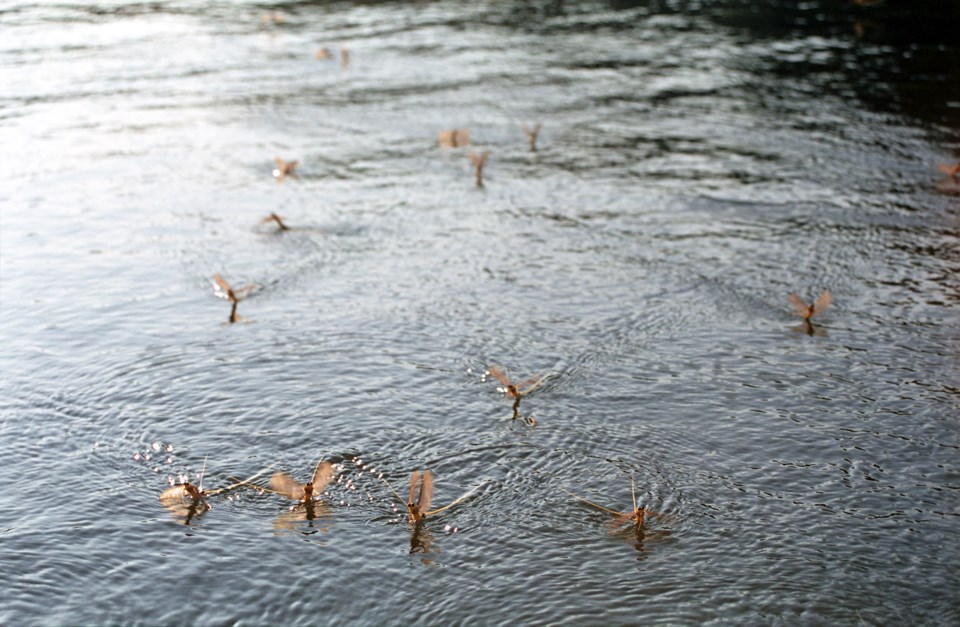It’s that time of year for Texans when bugs and insects begin popping up again. And as warm weather approaches, many may be wondering what some of those flying creatures are.
Mayflies are a diverse order of aquatic insects that thrive in freshwater habitats across the globe, except for Antarctica and a few remote islands. Their distinctive subimago stage sets them apart from other insects alive today.
According to Texas A&M AgriLife Extension Program Specialist Bryant McDowell, mayflies are active in the warmer months — ranging anywhere from late spring to early fall. The insect is usually most abundant where there are unpolluted, flowing and well-oxygenated waterways.
The immature stage, also known as naiads, dwell in water and can stay there for several years. They undergo multiple molts, progressively growing in size with each cycle. Upon reaching maturity, naiads vary in length, ranging from 3 to 30 mm depending on the species. They swiftly transition into a subimago with wings — a unique feature of mayflies — within seconds or minutes, taking flight from the water to nearby vegetation. There, they undergo another molt, becoming adult mayflies (imagoes).
“Adult mayflies are very short-lived, surviving only one or two nights in some cases,” McDowell told Local Profile. “The majority of their lives are spent as immature naiads in those aquatic systems.”
But why North Texas? Well it’s actually a good sign. McDowell explains that the presence of mayfly nymphs indicate a clean, unpolluted and highly oxygenated aquatic environment. And these harmless insects provide a service to the local ecosystem through their cleaning of freshwater and contribution to nutrient cycling in freshwater systems and between aquatic and terrestrial systems.
“Mayfly nymphs are important in the energy transfer cycle that occurs in freshwaters,” McDowlell said. “Some species are carnivorous, but the majority of nymphs feed on algae, plants and organic detritus. Nymphs are readily predated on — in turn — by many carnivorous animals, especially fishes.”
Fun fact: Many lures and artificial flies are patterned after mayflies
But even the carnivorous species aren’t harmful to humans — well, not in the way you might think. According to McDowell, issues with mayflies usually stem from large swarms, but they are usually more of a nuisance than anything.
“Think, car tires are not gaining traction on roadways because they are slipping on mayfly adult bodies,” McDowell said. “Most problem situations occur when they are attracted to lights at night.”




